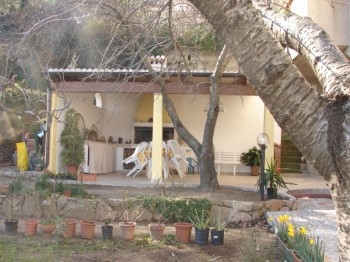 Apartment located at the feet of the Selene Nature Reserve.
Apartment located at the feet of the Selene Nature Reserve.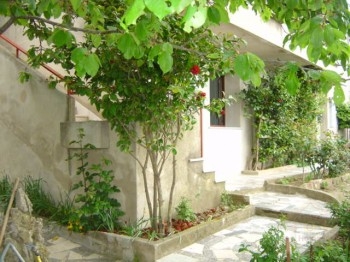 Apartment located at the feet of the Selene Nature Reserve.
Apartment located at the feet of the Selene Nature Reserve. Apartment located at the feet of the Selene Nature Reserve.
Apartment located at the feet of the Selene Nature Reserve.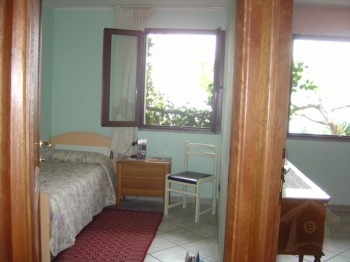 Apartment located at the feet of the Selene Nature Reserve.
Apartment located at the feet of the Selene Nature Reserve.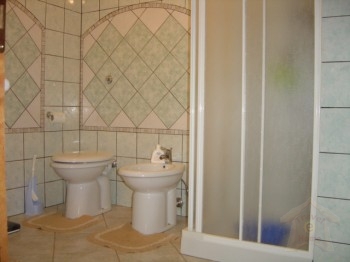 Apartment located at the feet of the Selene Nature Reserve.
Apartment located at the feet of the Selene Nature Reserve.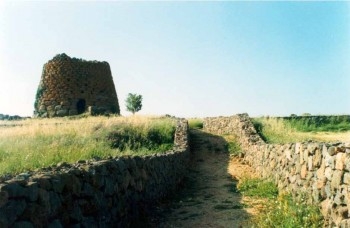 Apartment located at the feet of the Selene Nature Reserve.
Apartment located at the feet of the Selene Nature Reserve. Apartment located at the feet of the Selene Nature Reserve.
Apartment located at the feet of the Selene Nature Reserve. Apartment located at the feet of the Selene Nature Reserve.
Apartment located at the feet of the Selene Nature Reserve. Apartment located at the feet of the Selene Nature Reserve.
Apartment located at the feet of the Selene Nature Reserve. Apartment located at the feet of the Selene Nature Reserve.
Apartment located at the feet of the Selene Nature Reserve.
 Type: Apartment
Type: ApartmentThis is executive apartment with expansive views of Porto Frailis from the primary living areas. This vacation rental apartment is ideally suited for large family gatherings desiring a special setting for a memorable holiday and ski vacation.
Each bedroom has a private balcony and the master has a romantic wood-burning fireplace. A full bath with granite vanity is located between the bedrooms; a bathroom with a tiled shower is located on the first floor. A loft with two twin beds is located above the second bedroom.
The full kitchen has granite counters, stainless appliances and a complete set of dining and cookware. The living room includes a leather sofa and chair, gas fire place, flat screen HDTV, cable, DVD player, Bose iPod dock and free Wi-Fi.
Sit in the balcony in the evening and enjoy nightly fireworks from the pirate ship. Sun terraces, thatched roof palapas, fountains and barbeques can be enjoyed in private setting.
The vacation rental rates $275 per week. Until verified, rates are subject to change without notice.
This is a luxury getaway with a full basket of vacations gift to enjoy!
Dear People, My name is Gianni Franceschi, born in Lanusei Sardinia. At the age of 18 years I came to The Netherlands where since 1976 I\'m working for The Dow Chemical Company in Terneuzen. Beside my own job, I began renting some houses of family and good friends of mine. The owner on place, will welcome you with open arms. Though, I do have all the responsibility for a smooth and proper running of your vacation and as intermediary \'tween you and the owner of the property.
Payment Terms: Within 7 days after receiving our confirmation on your booking request you have to pay 30% of the total rent deposit. On arrival at your vacation home, the balance due has to be paid to the owner.
Cancellation: Cancellation 9 months to three weeks time before arriving 30% of the total rent payable. If canceled less than the above term is 50% of the total rent payable.
Regarding a withdrawal of your booking in case of serious illness, we can make an agreement that only 15% of the total amount will be paid from your side. Although when demonstrable with an authentic and signed medical certificate (no copies), which can be sent to us for further verification.
Lanusei is a hill centre famous for its cool climate and central location, overlooking the valley running down to the coast. In just a few minutes by car you can be at the beaches of Ogliastra, the mountains of the Gennargentu, or the lakes, rivers and cave systems of the surrounding area. In Lanusei you find the diocese and the Collegio dei Salesiani, the law courts and the hospital. Much of the territory of Lanusei is crossed by the Little Green Train or Trenino Verde, whose route winds from the town centre to the charming heights of Pizzu Cuccu and Su Carmu, from which you can admire the marvellous landscapes of the Ogliastra valleys. The area, between 150 and 1300 m amsl, includes both hilly and mountain zones, with the principal mountains being Monte Selene, Monte Tricoli and Monte Armidda. The latter is the location for an important Astronomical Observatory open to the public, whose position is particularly good for the absence of light pollution. As well as the observatory, there\'s the Planetarium of the Liceo Ginnasio, also open to the public. The countryside is of great environmental interest, with many wild animals: wild boar, mouflon, birds of prey, partridges, hares, etc. There are archaeological remains from the recent Neolithic period until Roman times. The most important remains are from the Nuragic period: six nuraghi, two tombe dei giganti and about fourteen probable dwelling sites. The most important wildlife and archaeological site is that of Selene: built on a rocky spur, there is a settlement only a short distant from splendid Tombe dei Giganti. The view from Monte Armidda is charming: the distinctive Perda Liana, Monte Tricoli, the porphyry crest of Serra Coronedda and the coastal plain.. From the summit of Monte Tricoli you have a great view, from the coast in the east to the tacchi of Ulassai, Jerzu and Osini in the west.
Forty kilometres of the wildest Sardinian coastline, with vertical cliffs cut by deep incisions that interrupt the impressive rock walls with sandy bays and beaches, which are true jewels of the Mediterranean. By definition one of the last natural paradises, where birds such as Audouin\'s Gull, Eleonora\'s Falcon and the European Shag nest and live in symbiosis with a natural habitat with many species found only in this area and jealously guarded by the shepherds who to this day graze their herds of goats. The Grotta dei Colombi, the inlets of Portu Pedrosu and Portu Quau and the beaches of Cala Goloritzé and Ispuligidenie (Cala Mariolu and the Spiaggia dei Gabbiani) will accompany you in an unforgettable voyage, discovering undersea sumps inside the Grotta del Fico, the last kingdom of the Monk Seal, and taking you back in time to relive an ancient world. And we\'re not finished, there are still the beaches of Cala Sisine and Cala Luna.
Mountains, rocks, crystalline sea: this is the landscape that is found in the territories that make up this section of Sardinia, that is, the Ogliastra with its �Tacchi� (mountain outcrops), desert areas and small isolated coves; the Gennargentu with its snow-covered mountain tops and its skies, playground to the majestic golden eagle; and finally the Supramonte, an uncontaminated paradise of still unexplored caves, centuries-old forests and archaeological and naturalistic treasures. In these areas the keen sports enthusiasts can find their dream: in fact, there is all the space needed to practice equestrian sports, even long rides on the beaches, to climb up the tall, vertical rocky walls that look out onto the sea, to do a variety of surfing activities, to go trekking and go on mountain bike excursions, all pleasant alternatives to visit otherwise inaccessible areas.
Sardinia is located in the centre of the Mediterranean and can be easily reached by air or sea. There are airports and harbours located all over the island. This section gives you useful information on how to reach Sardinia by air or sea: habours and airports, the routes and contacts details of air and ferry companies. You will also find information on how to reach the islands San Pietro, La Maddalena and Asinara. Places, facilities and services for a holiday without limitations. Sardegnatourismo offers some useful information for visitors with special needs. For information on beaches that are accessible with a wheelchair, a pushchair, a walking stick or for pregnant women. Also information on restaurants that offer gluten free dishes for those with allergies and where to do water sports with special assistance. Finally for those who might need a hospital nearby, because they travel with illness there is a list of hospitals and emergency units.
The following is a list of the Public Transport operators, some of whose services are utilised in the itinerary ideas presented in this site. These represent many, but by no means all, of the main public transport providers in Sardinia. The fact that we suggest the service of one operator over another should not in any way be interpreted as meaning that we think that the selected service is any better or worse than any other. In most cases the decision is based purely on what works best for the itinerary. Some of the following transport operators websites do not contain English versions. Purely for the purposes of providing information which we hope will be of assistance we have included here a few notes detailing how we go about accessing timetable information from the sites without english translations. Throughout this site the following transport Providers are referred to by the names indicated below in bold. ARST (Azienda RegionaleSarda Trasporti)- Operates many bus services all over the Island. ://www.arst.sardegna.it FdS (Ferrovie della Sardegna) - Operates many bus services and certain small gauge train services. (This is the same company that operates the Trenino Verde Tourist Trains from Arbatax to Cagliari in the summer months, but it has also other services which run all year). From Jan 2006, FdS also operates on the routes connecting major cities which were (until its closure at the end of 2005) operated by PANI. As of late 2008, all FdS services have come under the control of ARST. As at early 2009 the FdS website continues to operate and is the only source of information on these services. ://www.ferroviesardegna.it PANI (Organizzazione Pani Sardegna)- Services terminated late 2005. Transport connections now operated by FdS. FS (Trenitalia) - Operates the main train services connecting Cagliari to Sassari with a branch line to Olbia. ://www.trenitalia.com TIRRENIA - Operates Ferry services between Sardinia and mainland Italy. ://www.tirrenia.it MOBY LINES - Operates Ferry services between Sardinia and mainland Italy. ://www.mobylines.it FMS - Operates several bus services in the South West of the Island centered on the city of Iglesias. As of late 2008, all FMS services have come under the control of ARST. As at early 2009 the FMS website continues to operate (although it is now called ARST Sede Iglesias Carbonia) and is the only source of information on these services. ://www.ferroviemeridionalisarde.it DP (Deplanu Redentours) - Operates a service between Alghero, Alghero Airport and Nuoro as well as a service connecting Olbia Airport and Nuoro.
Sardinia is part of the Mediterranean area and shares its specific hazards. A few basic precautions are generally enough to stay out of trouble, especially during summer and autumn. Sardinia is scarcely populated, in particular the interior; help is not always easily found, and there remain large patches of land where mobile-phone coverage is inexistent (e.g. at the bottom of sheltered valleys). Terrain, despite the lack of high elevations, is generally rugged and steep; this, in combination with heat and lack of water, can quickly lead to disaster. Beware! Summer is hot and the sun quite strong; the usual precautions to avoid heatstroke and sunburns apply. From May to September, water scarcity in the country is a serious problem. Always take a lot of water with you (especially so when hiking), even if you plan a short trip; bringing along fresh watery fruit (such as peaches) is also helpful. While tap water is generally (but not always) safe, it is recommended to buy bottled mineral water; remember that sweating implies loss of water and of mineral salts. Autumn is generally fine, but can become very unpleasant because of the heavy rainstorms and hilly topography, creating possibilities for land- and mud- slides; always check the weather before planning a trip, even with your car. Winter and spring are generally safer, with pleasantly mild weather (especially during the day) and abundance of water; but remember that to higher elevations corresponds an increasingly colder weather and larger precipitation. Much of Sardinia (especially the Western part) is very windy from September to April; all drivers, and in particular those with campers, must exercise caution. Some open-sea beaches are notorious for strong underwater currents (in particular on the West coast); beware that warning signs are not always posted. Ask at your hotel or locals. The Mediterranean sea is no lily pond; every year, there are several people killed by drowning in Sardinia, and regularly victims are imprudent persons dragged from the shore by large waves. Be careful when hiking in old mining districts (Sulcis-Iglesiente, Sarrabus, Nurra); while local authorities have sealed off many dangerous areas, there remain some. Always avoid dark galleries, because they might hide vertical ventilation shafts; do not venture into closed areas (look for the word Pericolo Danger or the usual warning signs). If you want to explore mines, go to the local tourist information agencies; they will direct you to organized tours. There have been tales of individuals (mostly ex-mineworkers) running their own private tours; avoid these, as they are illegal and extremely unsafe, because of risks of cave-ins, water infiltration, etc.
\"A situation teeming with complexities� , this is the way the anthropologist Alberto Maria Cirese has defined heritage in Sardinia. And he has hit the mark indeed. A popular culture which finds expression in two periods of time: one that goes from prehistory to the present, and one that flows fast under our very eyes, inevitably transforming the past. Vital traditions, now lost in other parts of the Mediterranean, still survive in Sardinia: feasts, popular believes, wisdom of and respect for the elderly, hospitality and solidarity towards all. Fortunately, the passing of time has made people realize the extreme fragility of what has been kept for millenniums: language, identity, but also music, chants and dances, handicrafts and the preparation of food and wine. By looking around, people have felt the need to protect the immense cultural heritage they have under their feet: thus numerous museums have been opened which have diversified the object to protect, libraries and archives have increased in number, archaeological sites of incomparable beauty have been rediscovered, ancient monuments have been restored and opened to the public, peasant festivals have been revived and invented in order to implement local productivity. Sardinia is, thus, an open-air universe that has not stood still, but has been able to turn Time into its ally.
February to November.
Italian.
Final cleaning fee of €50.
Included all linen and the energy costs.











Luxury apartment bay view
$0.00 / Night

